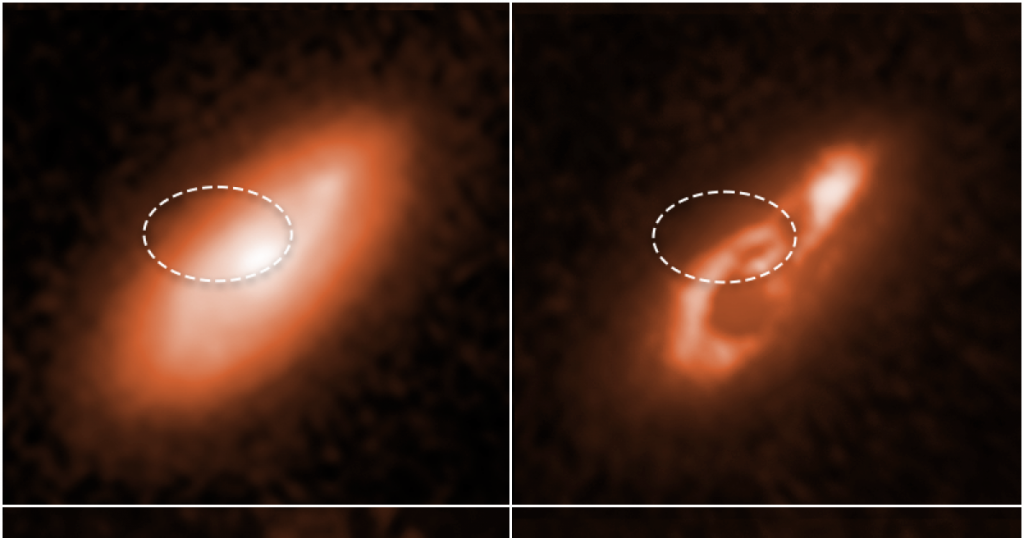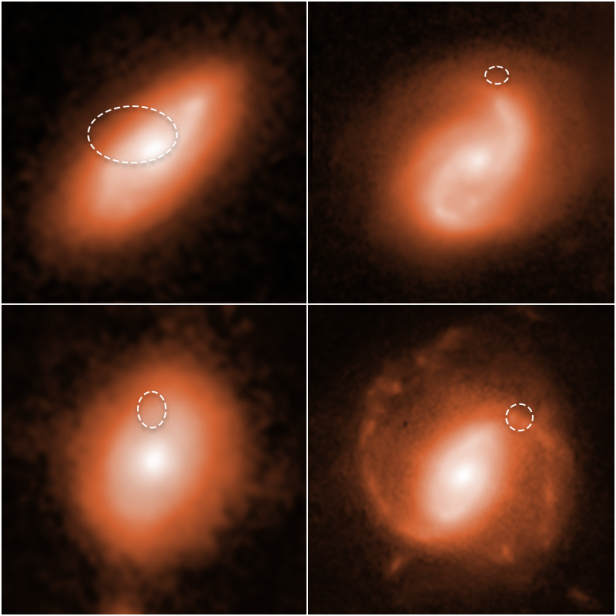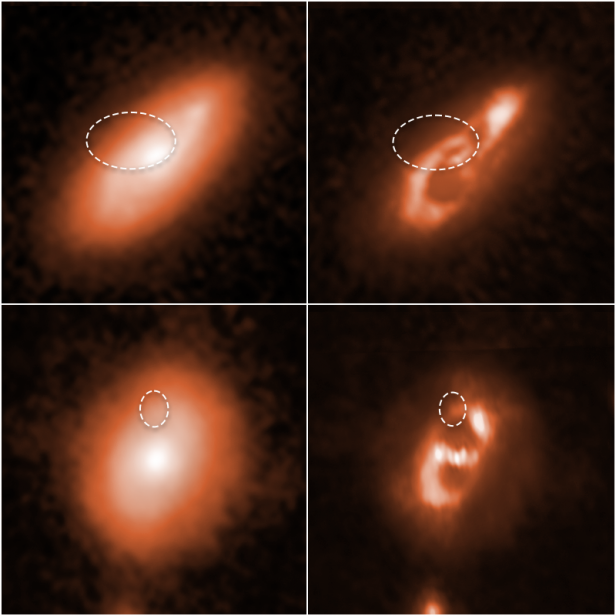© NASA, ESA, Alexandra Mannings (UC Santa Cruz), Wen-fai Fong (Northwestern)
Rapid bursts of radio are one of space exploration’s greatest mysteries. A fast radio burst (FRB) generates as much energy in a thousandth of a second as our sun in an entire year.
Despite this tremendous energy, it is difficult to track and examine because it only lasts for a short time. Since the first FRB was recorded in 2001, 1,000 others have been discovered. Only 15 of them can be assigned to specific galaxies. This low tracking success rate makes it very difficult for researchers to determine what kind of galaxies they belong to. And if you don’t know, it’s hard to research how FRBs came about in the first place.
Trace FRBs into 5 spiral galaxies
Now the Hubble Space Telescope has made it possible for the first time to capture high-resolution views of the origins of the 5 FRBs. They are found in or near the arms of 5 spiral galaxies. Most galaxies are about the size of our own, the Milky Way, which is relatively small, and still forms new stars.
Galaxies that have been found with Hubble as the origin of FRBs are very far from Earth. This is why light takes so long to reach our galaxy. Researchers see them in the condition they were in billions of years ago. Galaxies looked like this when the universe was half its age today.
To find the origin of the FRBs, Hubble recorded ultraviolet and light in the near-infrared range using a Wide Field Camera 3. The UV rays tracked the glow of young stars in the spiral arms of a spiral galaxy. Light in the near-infrared range has been used to determine the mass of galaxies and where the oldest stars are located.
4 galaxies from which FRBs originate. The place of origin of the following FRBs is related to the ring. FRB 190714 (Top Left), FRB 191001 (Top Right), FRB 180924 (Bottom Left) FRB 190608 (Bottom Right)
© NASA, ESA, Alexandra Mannings (UC Santa Cruz), Wen-fai Fong (Northwestern)
Several theories can be excluded
Hubble images showed that the FRBs do not come from regions of the spiral arms, which are particularly bright, that is, they harbor massive stars. This supports the theory that FRBs do not come from the smallest and most massive stars.
This allows researchers to rule out some other theories about the origins of FRBs. These include explosions of smaller and more massive stars that create bursts of gamma rays. Some types of supernovae can also be excluded.
Neutron star fusion is also unlikely. Neutron stars are the burning cores of stars left behind after a supernova explosion. Neutron star fusion usually lasts for billions of years and occurs in old galaxies where new stars do not form.
On the left are images of the entire galaxy. On the right are the digitally-processed images that better show the spiral structure of galaxies. Above is the place of origin of FRB 190714, below is FRB 180924
© NASA, ESA, Alexandra Mannings (UC Santa Cruz), Wen-fai Fong (Northwestern)
Hubble study supports magnet theory
However, the Hubble results also support the theory of origin of FRBs. According to this, they come from a youth magnet. Magnetic stars are neutron stars with strong magnetic fields. According to NASA, their magnetic field is “10 trillion times stronger than refrigerator magnets.” Last year, researchers were able to observe an FRB in the Milky Way to an area where magnetic stars are located.
The strong magnetic field can create flashes of light and magnetic processes on the surface of the magnets, which in turn can generate radioactive radiation. According to the current study, Hubble’s observation would support this thesis and exclude anything smaller or older than magnetic stars as the source of FRBs.
In the future, this determination should facilitate finding the places of origin of FRBs and thus explain their formation. Researchers now know which galaxy types and which regions of these galaxies should be considered in order to determine the sources of FRBs.

“Social media evangelist. Baconaholic. Devoted reader. Twitter scholar. Avid coffee trailblazer.”









More Stories
These brands are most vulnerable to phishing scams
Apple Maps Now Has a Web Version and Wants to Challenge Google Maps
Best AirDrop Alternatives for Android